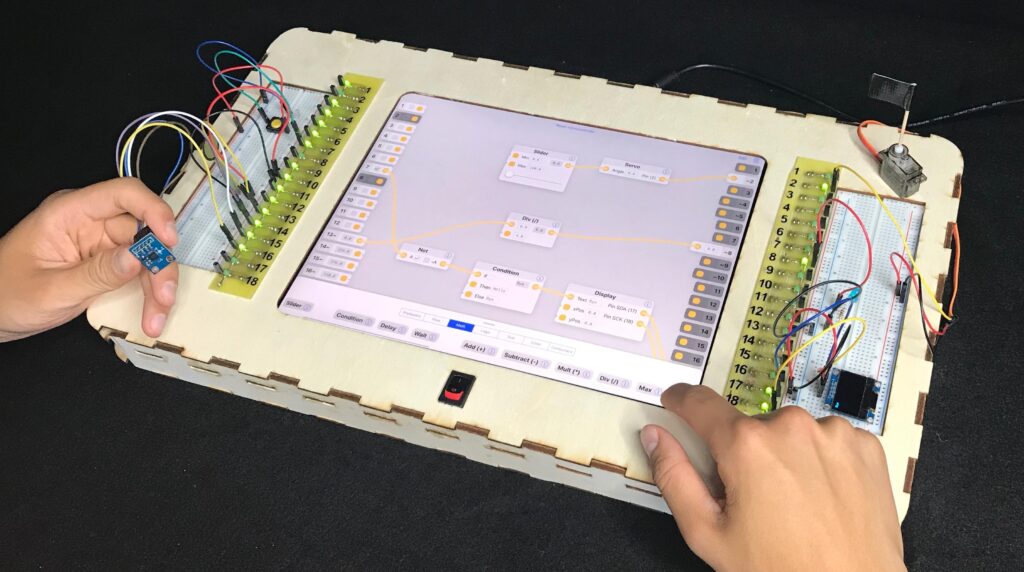Flowboard provides visual learning environment for coding

Embedded programming using the Arduino IDE has become an important part of STEM education, and while more accessible than ever before, getting started still requires some coding and basic electronics skills. To explore a different paradigm for starting out on this journey, researchers have developed Flowboard to facilitate visual flow-based programming.
This device consists of an iPad Pro and a set of breadboards on either side. Users can arrange electrical components on these breadboards, changing the flow-based program on the screen as needed to perform the desired actions. Custom ‘switchboard’ hardware, along with an Arduino Uno running a modified version of Firmata, communicate with the iPad editor via Bluetooth.
With maker-friendly environments like the Arduino IDE, embedded programming has become an important part of STEM education. But learning embedded programming is still hard, requiring both coding and basic electronics skills. To understand if a different programming paradigm can help, we developed Flowboard, which uses Flow-Based Programming (FBP) rather than the usual imperative programming paradigm. Instead of command sequences, learners assemble processing nodes into a graph through which signals and data flow. Flowboard consists of a visual flow-based editor on an iPad, a hardware frame integrating the iPad, an Arduino board and two breadboards next to the iPad, letting learners connect their visual graphs seamlessly to the input and output electronics. Graph edits take effect immediately, making Flowboard a live coding environment.
Want to learn more? Check out the team’s research paper here.









